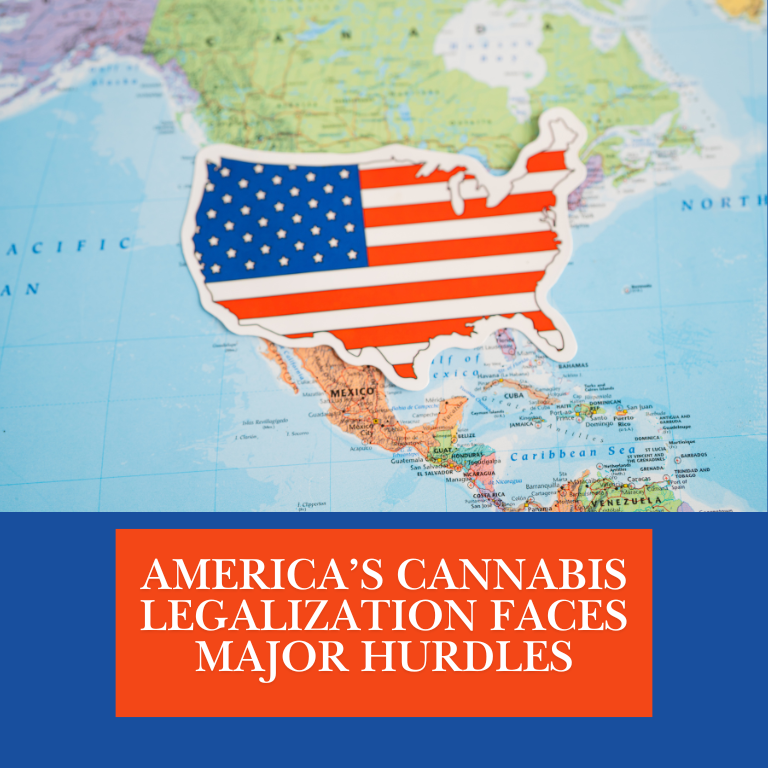Once a Beacon of Progress, Legal Cannabis Faces Rising Challenges
When marijuana legalization first gained momentum in the United States, it was seen as a landmark step for criminal justice reform, economic growth, and public health benefits. Advocates argued that legal cannabis would eliminate the illicit market, generate tax revenue, and create a well-regulated industry.
However, years into the experiment, the results tell a different story. From New York to California, illegal dispensaries flourish, crime linked to cannabis trade is on the rise, and concerns about the health impact of high-potency marijuana are growing. Now, even some former supporters of legalization are questioning if the process was rushed and poorly structured.
A Promised Solution That Has Yet to Deliver
Keith Humphreys, a drug policy expert at Stanford University, believes the public was misled by overly optimistic promises. “People were told that this would be a well-regulated industry generating jobs and tax revenue, but those expectations have not been met,” he said.
New York, for example, has struggled immensely with its cannabis rollout. While only 140 legal dispensaries exist, an estimated 8,000 illegal ones operate in New York City alone. Legal retailers, forced to comply with strict regulations and high taxes, cannot compete with unlicensed vendors who evade taxes and sell unregulated, high-potency THC products.
California, another early adopter of legal cannabis, faces similar struggles. A 2023 audit found that two-thirds of the state’s cannabis sales come from the illegal market. Meanwhile, law enforcement reports a rise in cartel-linked cannabis operations, contradicting the promise that legalization would replace dangerous illicit trade.
The Public Health Concerns: High-Potency Cannabis and Rising Risks
Beyond economic concerns, health risks are becoming more apparent. The potency of cannabis has surged, with some products now containing more than 20% THC—far higher than the 3-5% found in marijuana from the 1990s.
Heavy cannabis use is increasingly linked to cognitive impairment, attention deficits, and mental health disorders such as psychosis and schizophrenia. The Centers for Disease Control and Prevention (CDC) reported a significant rise in marijuana-related hospital visits, particularly among adolescents.
“We’ve seen a dramatic increase in daily high-potency marijuana consumption, and the long-term effects are still unknown,” said Humphreys. “The concern is that we are exposing an entire generation to risks we don’t yet fully understand.”
Teen Cannabis Use on the Rise Despite Legalization Promises
One argument for legalization was that it would reduce teenage marijuana consumption. However, studies indicate that adolescent cannabis use has increased in states where it is legal. New York City schools report widespread cannabis vaping, and drug-related disciplinary incidents rose 17% in 2022.
Public safety concerns extend beyond schools. In Colorado, a state that legalized marijuana in 2012, cannabis-related DUI arrests have surged. Traffic fatalities involving drivers under the influence of marijuana have risen by 140%.
Kevin Sabet, president of Smart Approaches to Marijuana (SAM), believes the country will eventually rethink its stance. “Whether it’s in five, ten, or fifty years, we will have a reckoning with marijuana, just like we did with tobacco,” he said.
Public Opinion Shifts: Is America Having Second Thoughts?
Despite legalization’s setbacks, marijuana remains popular. A 2023 Gallup poll found that 68% of Americans support legal cannabis. However, experts suggest the issue is not with legalization itself but with the way it has been implemented.
“The problem isn’t legalization, it’s the over-commercialization,” said Cat Packer, director at the Drug Policy Alliance. “States have prioritized profits over public health, and that’s where we’ve gone wrong.”
Some states are considering tighter regulations. New York lawmakers are reviewing their policies, while California and Oregon are discussing stronger penalties for illegal growers and restrictions on high-potency products.
One emerging proposal is capping THC potency levels, similar to how alcohol proof levels are regulated. “We limit alcohol potency, so why not marijuana?” Humphreys suggested.
The Future of Cannabis Legalization in the U.S.
The challenges facing the cannabis industry raise important questions about the future of legalization. Will states reintroduce stricter regulations? Will the federal government step in to provide clearer guidelines? And, most importantly, can the initial promises of legalization still be fulfilled?
For now, the marijuana experiment in the U.S. remains a work in progress, with no clear resolution in sight.
OG source














